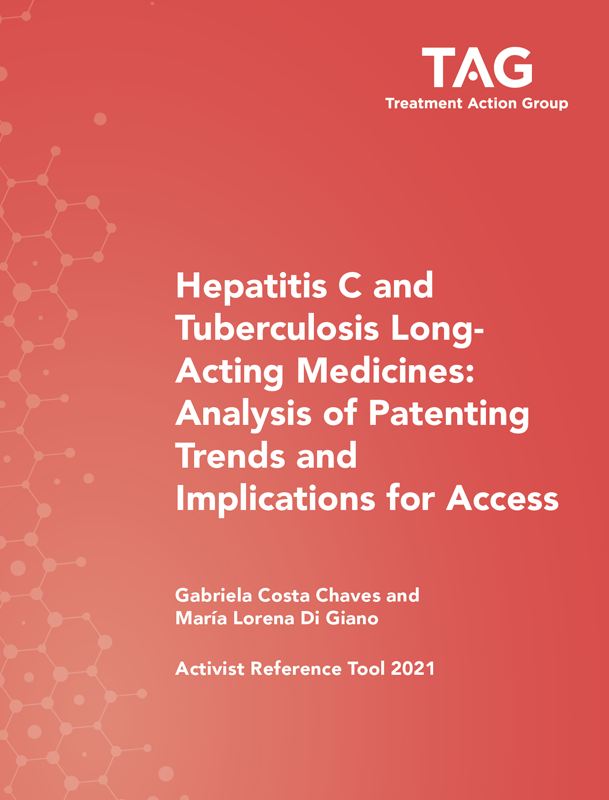Long-acting medicines hold enormous potential for the treatment of hepatitis C virus (HCV) and prevention of tuberculosis (TB). They could possibly help people who may not have immediate access to healthcare settings maintain adherence to regimens while decreasing the number of clinic visits, and could ensure discretion and confidentiality when being treated, a development that could be particularly beneficial to incarcerated populations.
However, existing patents could pose obstacles to obtaining treatment, particularly in low-and-middle-income countries (LMICs). This patent landscape identifies a total of 55 patents and patent applications, of which 19 are updates. Our new report, Hepatitis C and Tuberculosis Long-Acting Medicines: Analysis of Patenting Trends and Implications for Access, offers recommendations to ensure access to long-acting technologies throughout the research and development process.
Given that licensing agreements will require negotiations either with originator companies or patent holders, to ensure equitable access to long-acting therapies, questions relating to equitable access should be addressed at the early stages of the research and development process. This includes guaranteeing affordable prices for all, invoking the use of intellectual property flexibilities, and ensuring multiple producers to secure a sustainable supply chain.

